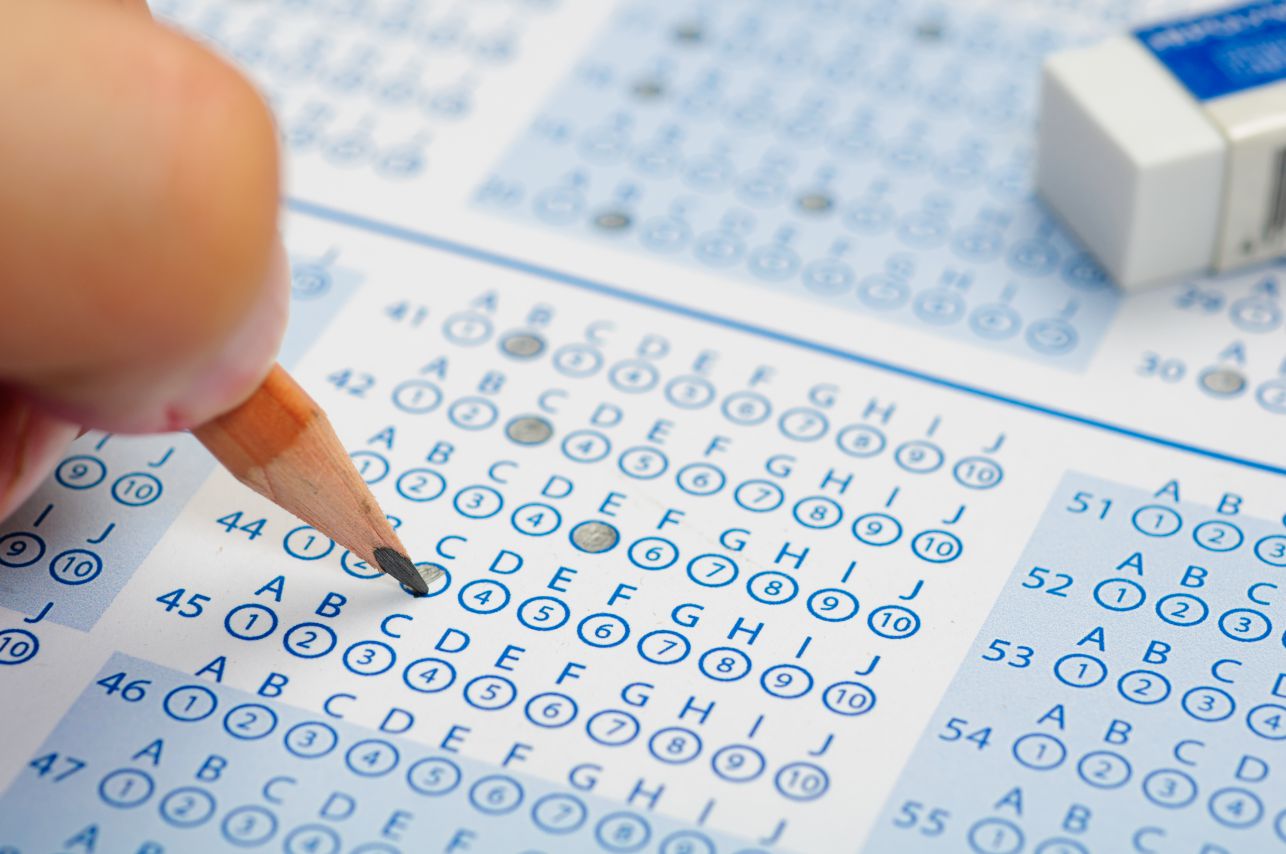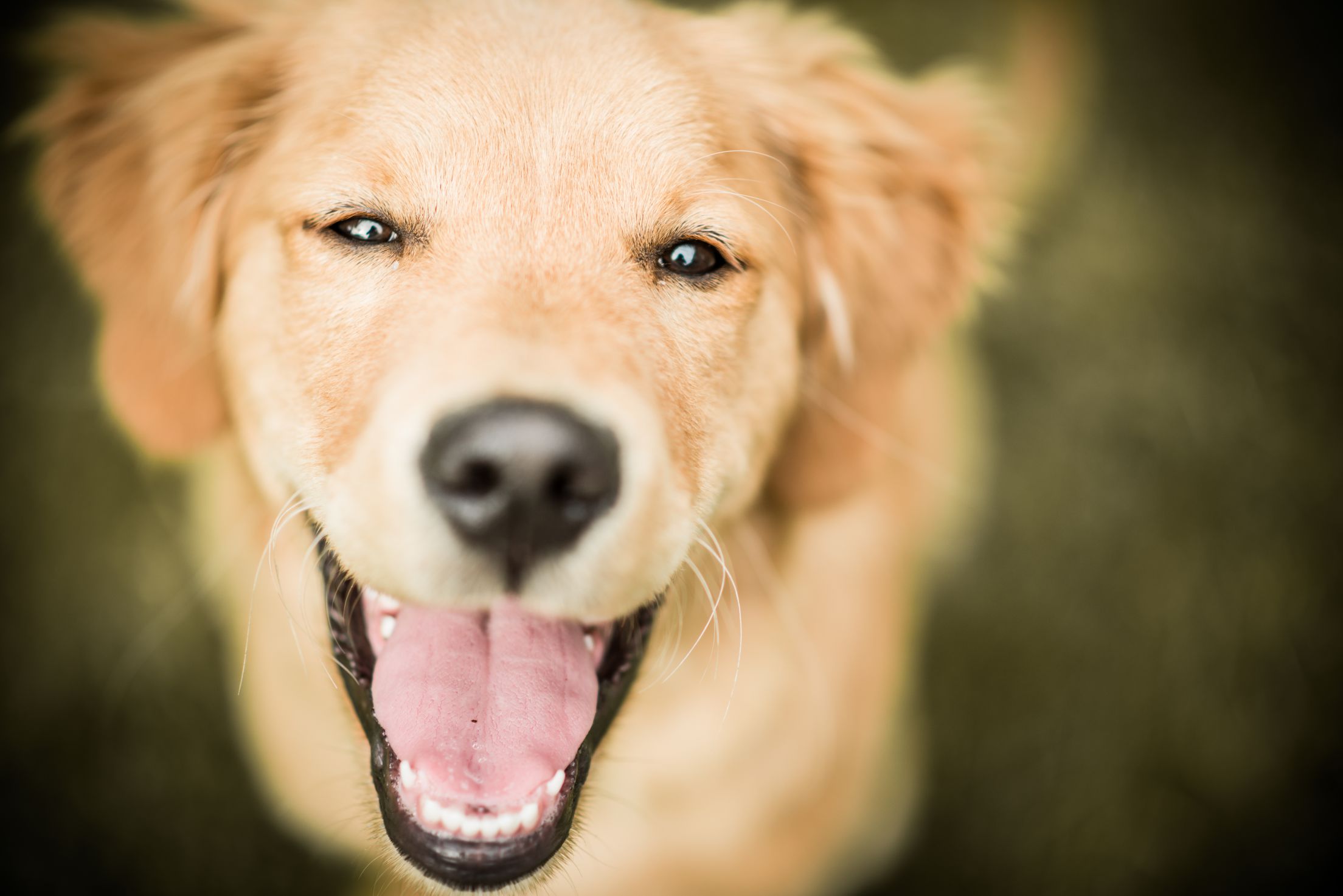Chapter 1. Left Out and Feeling Low
Introduction
Within-Subjects Design
In this activity, you will explore the impact of inclusion and exclusion on self-esteem by creating a design to measure change within individuals.
Dr. Melanie Maggard
Dr. Natalie J. Ciarocco, Monmouth University
Dr. David B. Strohmetz, Monmouth University
Dr. Gary W. Lewandowski, Jr., Monmouth University
Something to Think About…
Scenario: Imagine that you are a child again. You are on the playground surrounded by your peers and it’s time for teams to be chosen for a game of kickball. Your hands start to sweat and your heart races as you think, Please let me get picked. Please let me get the chance to play today. You stand there attentively as the team leaders choose their players, but before you can be picked, they reach the number of players they want. You are devastated! As the teams run off to play, you think, Why didn’t I get picked? Do they not like me? What’s wrong with me?

Something to Think About…

Being excluded from social groups can cause us to reconsider how we feel about ourselves, even if these doubts are temporary. As social beings, we tend to feel better when we are part of a group, not excluded from one. Now, we are going to investigate this concept by exploring the impact that being included in or excluded from playing a game can have on our self-esteem. Maybe it isn’t just kids who can experience the feeling of being left out!
Our Research Question

Based on your experiences with being included in or excluded from groups, you can develop a research study that examines the impact of social exclusion on self-esteem. But first, you will need a framework to help you explore this topic. Research studies all start with a question, so here is your chance to ask one of your own.
Question 1.1
Which of the following research questions would be best to ask given the goal of our study?
| A. |
| B. |
| C. |
Picking the Best Design

Now that you have a research question (“Does being included in or excluded from playing a game with others cause an increase or decrease in young adults’ self-esteem?”), you must decide which type of research design will best answer your research question. To narrow things down, consider the following:
Nonexperimental Design
Experimental Design
Question 1.2
Does your research question require a nonexperimental design or an experimental design?
| A. |
| B. |
Picking the Best Design

Since comparisons must be made in order to answer your research question (“Does being included in or excluded from playing a game with others cause an increase or decrease in young adults’ self-esteem?”), consider the following types of experimental designs:
Two-group Design
Pretest-posttest Design
Repeated-measures Design
Question 1.3
Would your research question require a two-group, pretest-posttest, or repeated-measures design?
| A. |
| B. |
| C. |
Picking the Best Design

Having decided that your research question requires multiple measurements to determine impact, you must choose the best comparisons to make.
Question 1.4
Given the research question (“Does being included in or excluded from playing a game with others cause an increase or decrease in young adults’ self-esteem?”), which comparison is best?
| A. |
| B. |
| C. |
Picking the Best Design

Now that you know you have an experimental design that compares the pretest to inclusion in a game to exclusion from a game, you can identify your independent and dependent variables.
Independent Variable
(IV)
Dependent Variable
(DV)
Question 1.5
Given the research question (“Does being included in or excluded from playing a game with others cause an increase or decrease in young adults’ self-esteem?”), what is your independent variable?
| A. |
| B. |
| C. |
Picking the Best Design

Question 1.6
Given the research question (“Does being included in or excluded from playing a game with others cause an increase or decrease in young adults’ self-esteem?”), what is your dependent variable?
| A. |
| B. |
| C. |
Picking the Best Design

Because you have an experiment with 1 independent variable and 3 levels (Pretest/no game vs. Inclusion in game vs. Exclusion from game) that each participant is exposed to, you will use a type of within-subjects design called a repeated-measures design. The pretest/no game level serves as a baseline measurement to which the other measurements can be compared.
Baseline Measurement
Question 1.7
Which of the following is an advantage of including a baseline measurement as the pretest in this study?
| A. |
| B. |
Picking the Best Design

Question 1.8
Why have we selected a within-subjects design to address our research question instead of a between-subjects design?
| A. |
| B. |
| C. |
Operationally Defining the Independent Variable
Next, we need to operationally define the independent variable (IV) of game condition by determining exactly how we will manipulate it. As we do, we’ll want to be sure our study has a high level of experimental and mundane realism.
Experimental Realism
Mundane Realism
Question 1.9
Which of the following study options has the highest level of experimental realism?
| A. |
| B. |
| C. |
Operationally Defining the Independent Variable
Question 1.10
Which of the following study options has the highest level of mundane realism in regard to playing a game?
| A. |
| B. |
| C. |
Operationally Defining the Independent Variable
It looks like the task that is highest in experimental and mundane realism involves young adults playing a game of “cyberball.” We know that all participants will be measured at 3 points in time: pretest (before the study begins), after being included in the game, and after being excluded from the game. Therefore, we will have the following design:
| Summary of Our Within-Subjects Study | ||||
| Pretest Measure | IV Level 1 | Time 1 Measure | IV Level 2 | Time 2 Measure |
| Self-esteem at Baseline | Inclusion in Game | Self-esteem after Inclusion | Exclusion from Game | Self-esteem after Exclusion |
Operationally Defining the Dependent Variable
You have now established the key comparison between Pretest/No game vs. Inclusion in game vs. Exclusion from game. Next, we need to specify the exact nature of our dependent variable, self-esteem. First, consider the following:
Question 1.11
Which type of measure is better for assessing self-esteem?
| A. |
| B. |
Choosing the Best Measure
We know we want to use a self-report measure to measure self-esteem. Now it is time to determine which type of self-report measure to use. Keep in mind how many and what types of questions, reliability, validity, and sensitivity would be ideal for young adults.
Reliability
Validity
Sensitivity
Question 1.12
Which of the following would be the best self-report measure of self-esteem in this study?
| A. |
| B. |
| C. |
Choosing the Best Measure
We can update the chart we made earlier to reflect how we will be measuring the dependent variable, which is shown in green below:
| Summary of Our Within-Subjects Study | ||||
| Pretest Measure | IV Level 1 | Time 1 Measure | IV Level 2 | Time 2 Measure |
| Self-esteem at Baseline | Inclusion in Game | Self-esteem after Inclusion | Exclusion from Game | Self-esteem after Exclusion |
| SSES at Baseline |
SSES after Inclusion |
SSES after Exclusion |
||
Weighing Our Options
A problem with repeated-measures designs is the possibility of order effects.
Order Effect
The following are 4 types of order effects we could encounter in our study:
Practice Effect
Fatigue Effect
Carryover Effect
Sensitization Effect
Question 1.13
Which of the following is not likely to be an order effect in this study?
| A. |
| B. |
| C. |
| D. |
Weighing Our Options
Since we have the potential for multiple order effects in this study, we must consider how to minimize their impact. Fortunately, we do not think that the potential for practice and sensitization effects will drastically impact the results, so we decide to keep the same measure of self-esteem, SSES, constant throughout the study. However, we do think it would be worthwhile to reduce the impact of the carryover effect by using counterbalancing.
Counterbalancing
Question 1.14
Which of the following is the simplest way for us to use counterbalancing in our study?
| A. |
| B. |
Weighing Our Options
Let’s update the chart we made earlier to reflect the counterbalancing method we have chosen for this study. Notice how we now have a second sequence that allows us to measure self-esteem after being excluded from a game prior to exposure to the inclusion level, thus covering all possible sequences in our study.
| Summary of Our Within-Subjects Study | |||||
| Sequence | Pretest Measure | IV Level 1 | Time 1 Measure | IV Level 2 | Time 2 Measure |
| #1 | Self-esteem at Baseline | Inclusion in Game | Self-esteem after Inclusion | Exclusion from Game | Self-esteem after Exclusion |
| SSES at Baseline |
SSES after Inclusion |
SSES after Exclusion |
|||
| #2 | Self-esteem at Baseline | Inclusion in Game | Self-esteem after Exclusion | Exclusion from Game | Self-esteem after Inclusion |
| SSES at Baseline |
SSES after Exclusion |
SSES after Inclusion |
|||
Determining Your Hypothesis

Now that you have determined what you will manipulate and measure, you must formulate an experimental hypothesis.
Experimental Hypothesis
Question 1.15
Which of the following is the best experimental hypothesis given the nature of your study?
| A. |
| B. |
| C. |
Finding a Sample

Before you can conduct your experiment, you need to determine exactly whom you want to study and where you can find this target sample.
Question 1.16
Which of the following samples would be best for your experiment?
| A. |
| B. |
| C. |
Submitting to the IRB

Now that you have determined how you will collect your data and your intended sample, you must submit your research procedure to the Institutional Review Board (IRB) for ethical approval. The IRB or ethics board will determine whether or not your study meets all ethical guidelines.
IRB
Each IRB has its own protocol which conforms to the national standard when a researcher submits an application for proposed research to be reviewed. In addition to the appropriate paperwork and other information submitted to the IRB, the board would consider the following description during their evaluation of your proposed experiment:
The purpose of this research is to determine whether being included in or excluded from playing a virtual game of “cyberball” will result in a change to self-esteem. To study this topic, 30 participants will be randomly selected from the research participant pool at the University. Researchers will measure all participants’ self-esteem via the State Self-Esteem Scale (SSES) at the beginning of the study, after being included in a virtual game of “cyberball” for 5 minutes, and after being excluded from a virtual game of “cyberball” for 5 minutes. Counterbalancing will be used such that half of the participants will receive the inclusion-exclusion sequence and half will receive the exclusion-inclusion sequence. Participants will be debriefed at the end of the study.
Responding to the IRB

The IRB reviewed your submission and has 1 concern. Although the study appears to present less than minimal risk to participants, there is no mention of informed consent and voluntary participation.
You must now determine how to respond to the IRB, keeping in mind the ethics of respect for persons and autonomy.
Question 1.17
Which of the following is the best response to the IRB’s concern?
| A. |
| B. |
| C. |
Running the Study

Now that we have secured the IRB’s approval, we should determine what the entire study will look like. Below are the steps of the study; can you place them in the proper order? (Note: The State Self-Esteem Scale is referred to as SSES.)
Question
Collecting Data

Now that you have a sense of how to conduct this study, it is time to see what data from this study might look like.
If you were to run a full version of this study, you would want to have at least 30 participants. Because you have a within-subjects design, each participant will be exposed to all levels of the independent variable.
Example Data Set
This is an example of what your data set would look like. The top row shows the variable names; the other rows display the data for the first 5 participants in each sequence.
In the “Sequence” column, a 1 = Inclusion-Exclusion sequence, and a 2 = Exclusion-Inclusion sequence. The Baseline (Pretest/No game), Inclusion, and Exclusion columns represent a participant’s score measured via the SSES prior to the study, after inclusion in the game, and after exclusion from the game.
| Participant Number | Sequence | Baseline | Inclusion | Exclusion |
| 101 | 1 | 58 | 58 | 43 |
| 102 | 1 | 91 | 94 | 82 |
| 103 | 1 | 75 | 85 | 67 |
| 104 | 1 | 23 | 24 | 9 |
| 105 | 1 | 65 | 63 | 61 |
| 116 | 2 | 81 | 85 | 78 |
| 117 | 2 | 61 | 60 | 49 |
| 118 | 2 | 53 | 57 | 46 |
| 119 | 2 | 20 | 29 | 6 |
| 120 | 2 | 80 | 85 | 67 |
Selecting the Proper Tool

Now that you have collected your data, you must decide the best way to summarize your findings. The decisions you made about how to collect your data dictate the statistics you can use with your data now. First, you need to consider if your study is descriptive or inferential.
Descriptive
Inferential
Question 1.18
Given the nature of your experiment, which of the following is the best statistical method?
| A. |
| B. |
Tutorial: Evaluating Output
The following is an example of output for another 3-level design where participants experienced all 3 conditions in the study. This study was about how hours slept at night (6 hours, 8 hours, and 10 hours) influence self-reported happiness. Click on the table below to learn more about each element of the output.

To report these numbers in a results section, put the numbers in as follows:
F (#,#) = #.##, p = .##, eta2 = .##.
| Tests of Within-Subjects Effects | |||||||
| Measure: MEASURE_1 | |||||||
| Source | Type III Sum of Squares | df | Mean Square | F | Sig. | Partial Eta Squared | |
| Hours | Sphericity Assumed | 91.289 | 2 | 45.644 | 67.230 | .000 | .699 |
| Greenhouse-Geisser | 91.289 | 1.694 | 53.903 | 67.230 | .000 | .699 | |
| Huynh-Feldt | 91.289 | 1.787 | 51.074 | 67.230 | .000 | .699 | |
| Lower-bound | 91.289 | 1.000 | 91.289 | 67.230 | .000 | .699 | |
| Error(Hours) | Sphericity Assumed | 39.378 | 58 | .679 | |||
| Greenhouse-Geisser | 39.378 | 49.113 | .802 | ||||
| Huynh-Feldt | 39.378 | 51.834 | .760 | ||||
| Lower-bound | 39.378 | 29.000 | 1.358 | ||||
Question
Tutorial: Evaluating Output

Click on the table below to learn more about each element of the output for this design.
To report these numbers in a results section, put the numbers in as follows:
F (#,#) = #.##, p = .##, eta2 = .##.
| Pairwise Comparisons | ||||||
| Measure: MEASURE_1 | ||||||
| (I) Hours | (J) Hours | Mean Difference (I-J) | Std. Error | Sig.b | 95% Confidence Interval for Differenceb | |
| Lower Bound | Upper Bound | |||||
| 1 | 2 | -2.200* | .222 | .000 | -2.762 | -1.638 |
| 3 | -.133 | .164 | .808 | -.549 | .283 | |
| 2 | 1 | 2.200* | .222 | .000 | 1.638 | 2.762 |
| 3 | 2.067* | .244 | .000 | 1.448 | 2.685 | |
| 3 | 1 | .133 | .164 | .808 | -.283 | .549 |
| 2 | -2.067* | .244 | .000 | -2.685 | -1.448 | |
| Based on estimated marginal means | ||||||
| *. The mean difference is significant at the .05 level. | ||||||
| b. Adjustment for multiple comparisons: Sidak. | ||||||
Question
Tutorial: Evaluating Output

Click on the table below to learn more about each element of the output for this design.
| Descriptive Statistics | |||
| Mean | Std. Deviation | N | |
| Six | 1.77 | .728 | 30 |
| Eight | 3.97 | .809 | 30 |
| Ten | 1.90 | .712 | 30 |
Question
Your Turn: Evaluating Output

Below is the output from your study:
| Tests of Within-Subjects Effects | |||||||
| Measure: MEASURE_1 | |||||||
| Source | Type III Sum of Squares | df | Mean Square | F | Sig. | Partial Eta Squared | |
| GameCondition | Sphericity Assumed | 2081.156 | 2 | 1040.578 | 101.918 | .000 | .778 |
| Greenhouse-Geisser | 2081.156 | 1.816 | 1146.056 | 101.918 | .000 | .778 | |
| Huynh-Feldt | 2081.156 | 1.930 | 2081.156 | 101.918 | .000 | .778 | |
| Lower-bound | 2081.156 | 1.000 | 91.289 | 101.918 | .000 | .778 | |
| Sphericity Assumed | 592.178 | 58 | 10.210 | ||||
| Greenhouse-Geisser | 592.178 | 52.662 | 11.245 | ||||
| Huynh-Feldt | 592.178 | 55.983 | 10.578 | ||||
| Lower-bound | 592.178 | 29.000 | 20.420 | ||||
Your Turn: Evaluating Output

Below is the output from your study:
| Pairwise Comparisons | ||||||
| Measure: MEASURE_1 | ||||||
| (I) GameCondition | (J) GameCondition | Mean Difference (I-J) | Std. Error | Sig.b | 95% Confidence Interval for Differenceb | |
| Lower Bound | Upper Bound | |||||
| 1 | 2 | -3.133* | .728 | .001 | -4.979 | -1.288 |
| 3 | 8.267* | .788 | .000 | 6.271 | 10.262 | |
| 2 | 1 | 3.133* | .728 | .001 | 1.288 | 4.979 |
| 3 | 11.400* | .944 | .000 | 9.008 | 13.792 | |
| 3 | 1 | -8.267* | .788 | .000 | -10.262 | -6.271 |
| 2 | -11.400* | .944 | .000 | -13.792 | -9.008 | |
| Based on estimated marginal means | ||||||
| *. The mean difference is significant at the .05 level. | ||||||
| b. Adjustment for multiple comparisons: Sidak. | ||||||
| Descriptive Statistics | |||
| Mean | Std. Deviation | N | |
| Baseline | 61.10 | 25.694 | 30 |
| Inclusion | 64.23 | 24.694 | 30 |
| Exclusion | 52.83 | 26.478 | 30 |
Your Turn: Evaluating Output

Based on the results of your statistical analyses on Screens 32 and 33, match the correct number in the “Answer” column to the term requested under “Prompt”:
Question
Activity: Graphing Results
Based on the data provided, drag each Game Condition bar to the correct Mean SSES Score.
| Descriptive Statistics | |||
| Mean | Std. Deviation | N | |
| Baseline | 61.10 | 25.694 | 30 |
| Inclusion | 64.23 | 24.694 | 30 |
| Exclusion | 52.83 | 26.478 | 30 |
Game Condition & Self-Esteem
Mean SSES Score
Game Condition
Question
Your Turn: Results

Now that you have worked with your data, you must determine the best way to express your findings in written form. You must be sure that how you describe your findings accurately represents the data.
Question 1.19
Based on the statistical analysis, which of the following results sections best fits the data and analyses from your study?
| A. |
| B. |
| C. |
| D. |
Take Home Message
You have determined how to express your findings in a scientifically responsible way. Now, you need to be able to talk about what your findings mean in everyday terms so that the world can benefit from your science.
Question 1.20
How would you explain what you found about self-esteem in relation to inclusion in and exclusion from a game to a friend or family member? Select the best option.
| A. |
| B. |
| C. |
| D. |

Congratulations! You have successfully completed this activity.
